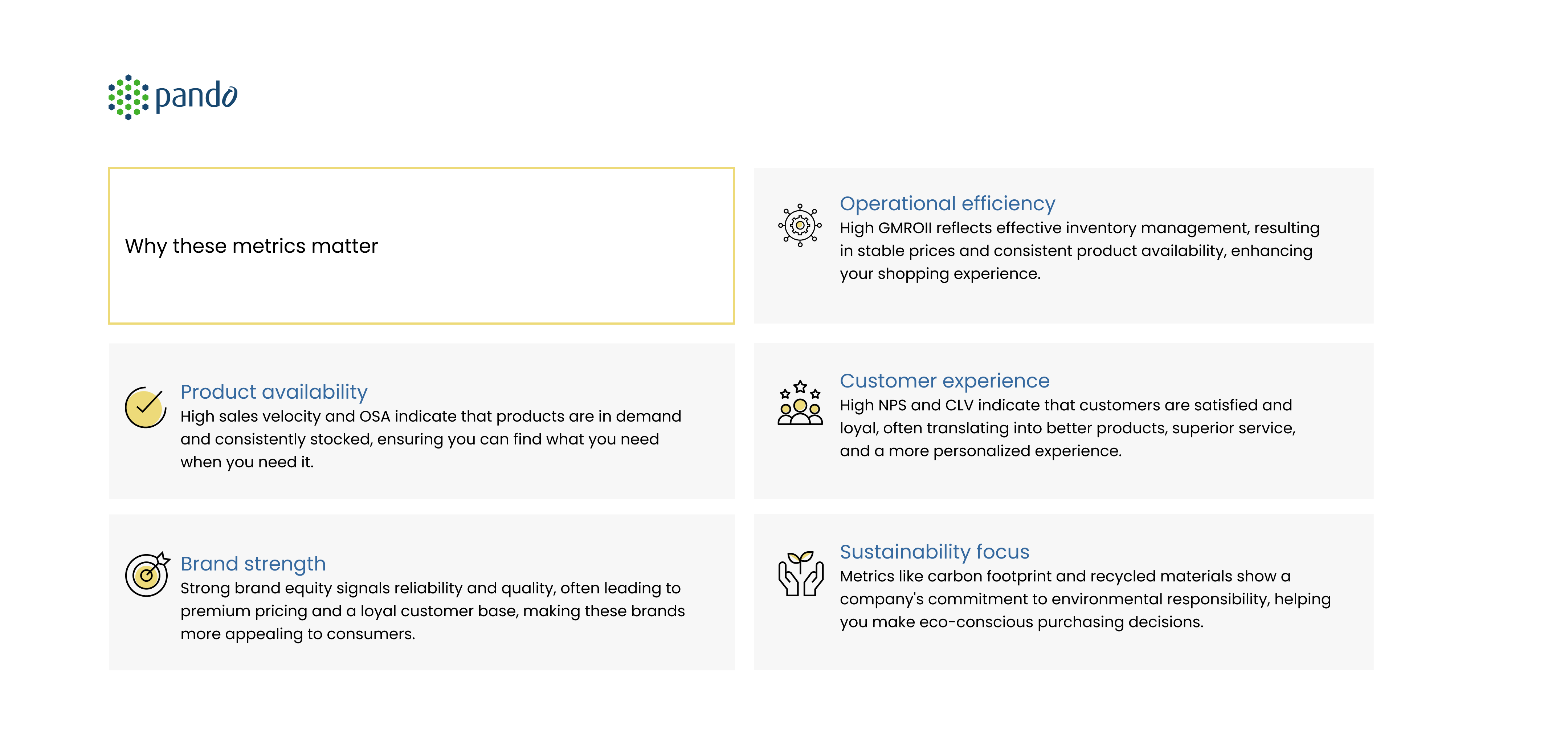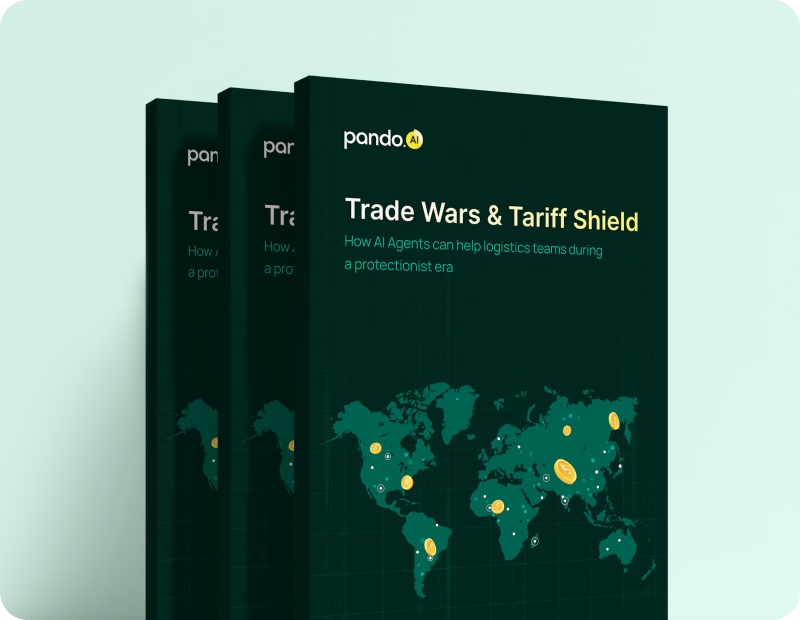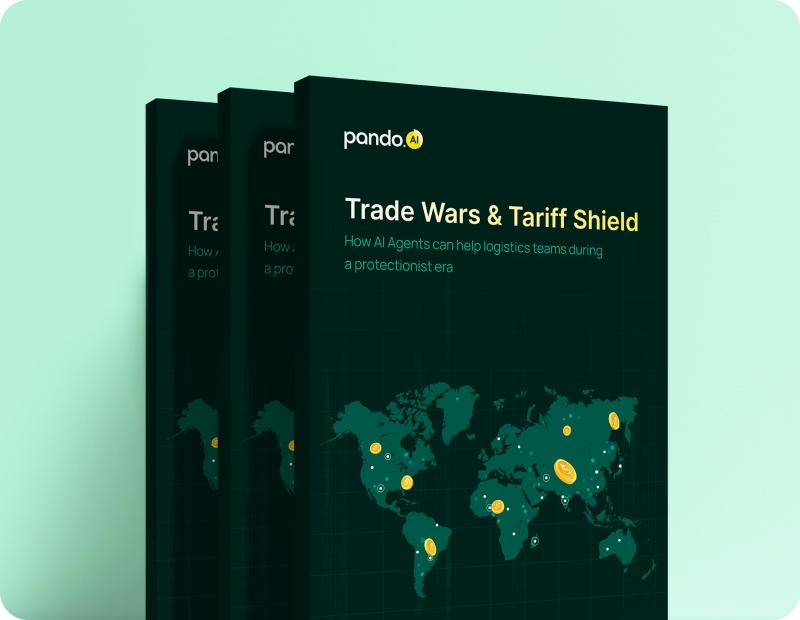-
Products Products
- Industry
- Initiatives
- Resources
- Company
- Book a demo

Before you go: Logistics leaders just dropped the truth on AI
The State of AI in Logistics 2025 is here — no hype, just real conversations and raw insights.
Industry landscape and supply chain trends reshaping the Consumer-Packaged Goods (CPG) industry – Part 1
Discover the hidden complexities of everyday products and understand how the CPG industry influences your shopping experience and the economy.
Published on August 28, 2024 • 6 mins read
Durga Pratiha

Discover the hidden complexities of everyday products and understand how the CPG industry influences your shopping experience and the economy.
Have you ever wondered about the products that fill your shopping cart every week? From the toothpaste you use in the morning to the snacks you munch on while watching TV, these items are all part of the Consumer-Packaged Goods (CPG) industry. These are products that you use daily and replace frequently.
But have you ever stopped to think about the massive industry behind these seemingly simple products? The CPG industry in the United States is a powerhouse, generating over $2 trillion in revenue annually. From the farmers who grow the ingredients for your favorite snacks to the truck drivers who ensure those snacks reach your local store, the consumer products supply chain touches almost every aspect of the American economy.
In this blog post, we'll peel back the layers of the CPG industry to help you understand its nature and impact on the US economy.
The landscape of CPG in the US
Now that you've got a taste of what the CPG industry is all about, let's take a broader look at its landscape in the United States.
First, consider the sheer size of this industry. Remember that $2 trillion figure we mentioned earlier? That's not just a big number - it represents about 10% of the entire US Gross Domestic Product (GDP).
Within this vast landscape, you'll find industry giants like Procter & Gamble, Coca-Cola, and Nestlé, as well as thousands of smaller companies. While the giants are household names, the smaller players, such as local craft breweries and artisanal soap makers, are increasingly important, often driving innovation and challenging the big players.
The CPG world is divided into distinct categories:
- Food and beverage: This category accounts for about 65% of the industry, covering essentials from coffee to frozen pizza. PepsiCo is a major player, recently enhancing its CPG supply chain by integrating advanced analytics and AI to improve demand forecasting and ensure that popular items like Lay’s chips and Tropicana juices are consistently available on store shelves.
- Personal care and cosmetics: Making up about 15% of the industry, this category includes grooming products like shampoo and toothpaste. Unilever, a leader in personal care, is focusing on sustainability by ensuring responsible sourcing of raw materials and reducing plastic waste, aligning with consumer demands for eco-friendly products like Dove and Suave.
- Household products and pet care: Representing roughly 10% of the industry, this category includes cleaning supplies like Lysol and pet care products like Purina pet food. Procter & Gamble has been innovating in its consumer packaged goods supply chain to increase efficiency and sustainability, launching a new line of eco-friendly cleaning products that cater to environmentally conscious consumers.
- Over-the-counter medications: This category covers about 5% of the industry, including common medications like Tylenol and Vicks. Johnson & Johnson is enhancing its consumer health segment by investing in digital technologies that streamline operations and improve distribution, making essential products like Tylenol and Band-Aid more readily available.
Each category has its unique dynamics, but they all share common threads: the need to understand and meet consumer demands, to innovate constantly, and to navigate complex supply chains and distribution networks.
Characteristics of the CPG Industry
Unlike durable goods like cars or furniture, you might buy once every few years, CPG products are consumed quickly and purchased frequently. This means CPG companies need to be constantly on their toes, ready to meet demand and adapt to changing consumer preferences.
Here are some key characteristics you'd observe:
1. High volume, Low margin:
- Scale is key: CPG companies thrive on selling massive quantities of products. While individual profit margins may be small, the cumulative effect of millions of units sold can lead to substantial revenues.
- Efficient operations: To maintain profitability in this high-volume, low-margin environment, CPG companies must optimize their operations, from manufacturing to distribution.
2. Brand loyalty and recognition:
- Customer relationships: Building strong brand loyalty is essential in the CPG industry. Companies invest heavily in marketing and advertising to create emotional connections with consumers and encourage repeat purchases.
- Brand equity: A strong brand can command a premium price and create a barrier to entry for competitors.
3. Intense competition:
- Market saturation: The CPG industry is highly competitive, with numerous players vying for market share. This competitive pressure can lead to price wars and a constant need for innovation.
- Product differentiation: To stand out in a crowded marketplace, CPG companies must find ways to differentiate their products, whether through unique features, packaging, or marketing campaigns.
4. Rapid innovation cycles:
- Consumer trends: CPG companies must stay ahead of consumer trends and rapidly introduce new products or improve existing ones. This requires a culture of innovation and agility.
- Product life cycles: The lifespan of CPG products can be relatively short, making it essential to continually refresh product lines to maintain consumer interest.
5. Complex supply chains:
- Global networks: CPG companies often have global supply chains, sourcing raw materials and manufacturing products in various regions. This complexity can make managing logistics and ensuring product quality challenging.
- Supply chain disruptions: The COVID-19 pandemic highlighted the vulnerability of supply chains, emphasizing the need for resilience and contingency planning.
Key business impact metrics
When evaluating the performance of a CPG company, executives and investors closely watch a variety of key performance indicators (KPIs). These metrics provide insights into sales, profitability, brand health, and operational efficiency, reflecting broader CPG industry trends.
.png?width=4320&height=2886&name=Graphic3%20(1).png)

Challenges and opportunities in the CPG industry
The CPG industry faces several challenges, along with exciting opportunities for growth and innovation.
- Changing consumer preferences: Younger generations are increasingly demanding healthier options and sustainable packaging. This shift presents opportunities for companies to innovate with plant-based, organic, and clean-label products, attracting loyal customers. Consequently, consumers now enjoy a broader range of healthier and eco-friendly product choices.
- E-commerce and direct-to-consumer (D2C) models: E-commerce and D2C channels are disrupting traditional retail. This shift allows companies to gather valuable data on consumer preferences and build stronger relationships with consumers through D2C channels. As a result, shoppers benefit from the convenience of online shopping and access to unique brands not typically found in traditional stores.
- Private label competition: Retailers are increasingly introducing their private-label products, competing with established brands at lower prices. This competition drives CPG companies to innovate and differentiate their offerings, giving consumers more options and potentially lower prices between brand names and store brands.
- Supply chain complexity: Global supply chains are becoming more intricate and prone to disruptions. In response, companies are investing in more resilient and efficient supply chains, often leveraging technology to enhance operations. For consumers, this translates to fewer shortages and increased availability of locally sourced products. This highlights the importance of addressing CPG supply chain challenges.
- Sustainability pressures: Sustainability pressures from consumers and regulators are prompting companies to adopt more environmentally responsible practices. Companies that prioritize sustainability can build stronger brand loyalty and potentially reduce costs over time, impacting the CPG industry value chain. This focus on sustainability means consumers will see more eco-friendly product options available in the market.
The CPG industry is more than just products on shelves—it's a dynamic ecosystem that shapes the US economy and your daily life. By understanding this industry, you're empowering yourself to make informed choices that align with your values, whether it's supporting sustainable practices, choosing innovative products, or simply getting the best value for your money.
Next time you're shopping, take a moment to appreciate the intricate supply chains, marketing strategies, and technological innovations behind each product. Stay tuned for part 2 of our series, where we'll dive into the exciting world of Supply Chain and Logistics Trends in the CPG industry. You'll discover how cutting-edge technologies and innovative strategies are revolutionizing the way products reach your home.
Subscribe to Pando blog and Crossroads newsletter now!
Stay up to date with the latest logistics, transportation, and supply chain tips and news.
Subscribe Here!

Related blogs
Industry landscape and supply chain trends reshaping the Consumer-Packaged Goods (CPG) Industry – Part 2












